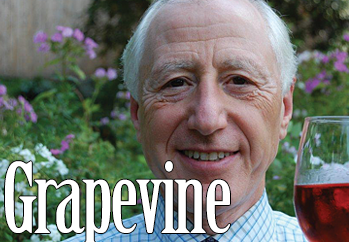A Brief History of the Burgundy Wine Region
Opinion Advocates for ideas and draws conclusions based on the author/producer’s interpretation of facts and data.
 The wines of France’s Burgundy region are famous for their unique aroma and flavor profiles – and their relative scarcity compared to worldwide demand. This imbalance has driven prices of the most famous wines into the collectors-only stratosphere.
The wines of France’s Burgundy region are famous for their unique aroma and flavor profiles – and their relative scarcity compared to worldwide demand. This imbalance has driven prices of the most famous wines into the collectors-only stratosphere.
To a certain extent, collectors’ obsessions have obscured the underlying turbulence of the region’s roots. One cannot fully appreciate the wines of Burgundy without an insight into the local culture, passion, geopolitics and, perhaps most of all, its history.
While Burgundy vineyards comprise only one-eighth the land coverage of California vineyards, they are owned or managed by a similar number of growers – about 3,000. Do the math: Burgundy vineyards are generally miniscule in size compared to California.
But this wasn’t always the case. The history of Burgundy is a tale of the ebb and flow of land control over millennia.
For this column, I’ve condensed the 2,000-year history of this region into five distinct periods. Each has enhanced the quality and appreciation of the fine wines produced from this ancient land.
- The Romans. Roman troops swept through this area in the fifth century and occupied the land for several centuries, experimenting with various grapes and eventually concentrating on Pinot Noir and Chardonnay.
- French Royalty. At the end of the eighth century, King Charlemagne brought the influence of the Roman Catholic Church to much of France, including Burgundy. As its ruler, he fancied the local red wines and acquired a parcel of land. However, legend tells us that the king had a habit of staining his beard at mealtimes, embarrassing his wife. She preferred that he drink white wine as a kingly alternative. To this day this parcel of land, Corton-Charlemagne, is an island of Chardonnay in a sea of Pinot Noir.
- The Dukes of Burgundy. In the 14th century, this aggressive family conquered and occupied Burgundy with a stranglehold on the local economy for the next 200 years. And Burgundy flourished. However, as the Roman Catholic Church gained influence in France in the 16th century, the House of Burgundy felt the need for the eternal salvation promised by the church. They were convinced that the way to salvation was through spiritual, not financial, wealth. They gradually transferred ownership of much of their Burgundian lands – and vineyards – to their winemakers, the church’s emissaries: Benedictine and Cistercian monks.
- The Monks. It is during this era (the 16th through the 18th centuries) that the reputation of Burgundy as a fine winemaking region flourished. The monks were fastidious record keepers, diligent laborers and insightful winemakers. They catalogued each inch of their land for its natural qualities – soil composition, exposure to the sun, elevation of vineyards – and planted vines accordingly. They perfected ages-old winemaking techniques. They even sold a portion of these sacramental wines to the aristocrats. And then came…
- The French Revolution. After Louis XVI was dethroned and beheaded, the revolutionaries distributed much of the wealth of the aristocracy and the church to the commoners. With their new and reclaimed holdings, the newly-enfranchised winemakers embraced the land and gained worldwide popularity for their wines.
Upon Napoleon’s accession to Emperor in 1804, his Napoleonic Code further distributed the land of Burgundy to the heirs of its citizens. Generation after generation, the vineyards were continually subdivided amongst the heirs of each succeeding generation, resulting in the hodgepodge of small vineyards that exists today. A number of today’s winemakers produce just a few hundred cases of wine from vineyards only a few rows wide.
What we taste today is the evolution of Burgundy and the culmination of thousands of years of influence and refinement. This is the pure essence of Burgundy. Not solely the grapes or the land, but the echo of ancient footsteps in the vineyards.
Nick Antonaccio is a 47-year Pleasantville resident. For over 30 years, he has conducted wine tastings and lectures. Nick is a member and program director of the Wine Media Guild of wine journalists. He also offers personalized wine tastings. Nick’s credo: continuous experimenting results in instinctive behavior. You can reach him at nantonaccio@theexaminernews.com.
